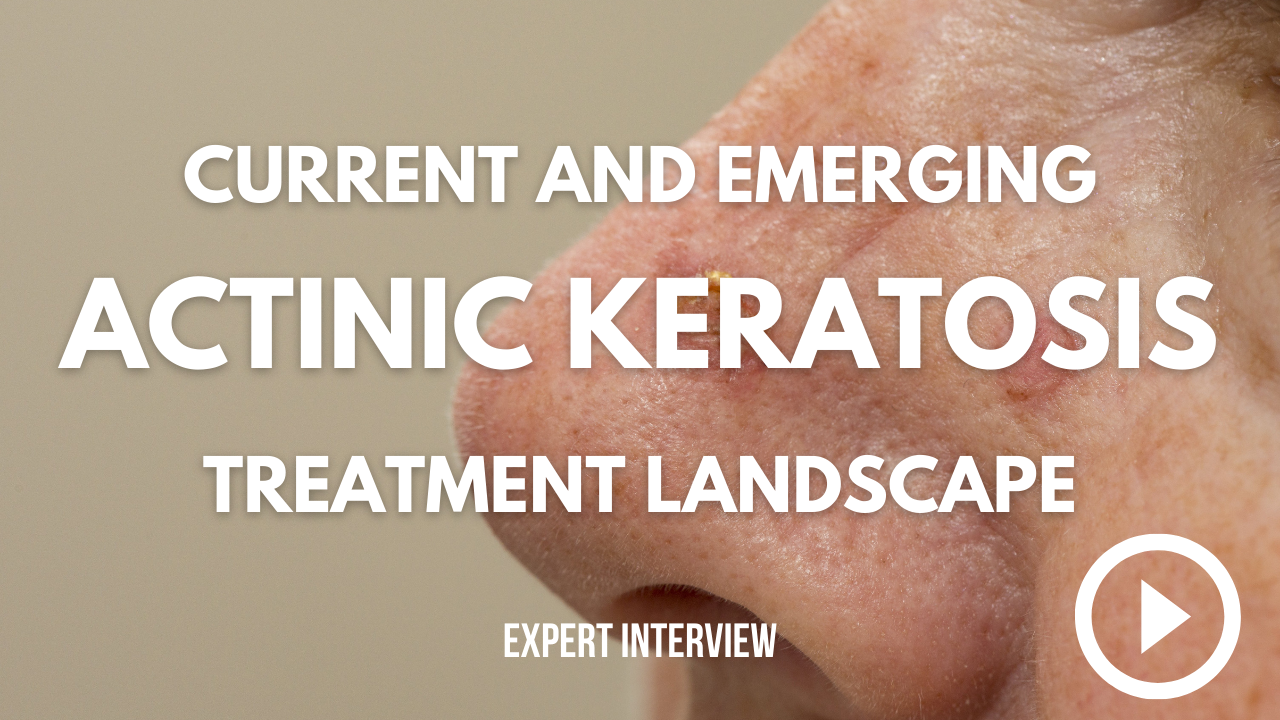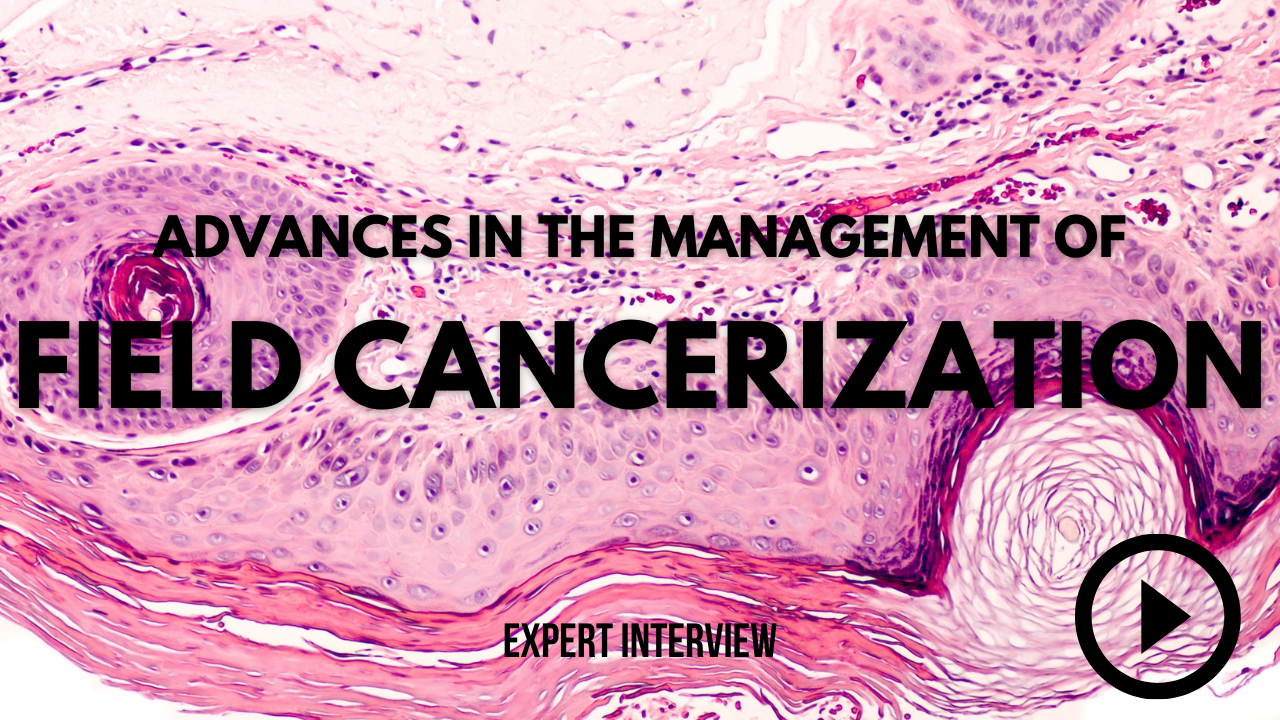- Acne
- Actinic Keratosis
- Aesthetics
- Alopecia
- Atopic Dermatitis
- Buy-and-Bill
- COVID-19
- Case-Based Roundtable
- Chronic Hand Eczema
- Chronic Spontaneous Urticaria
- Drug Watch
- Eczema
- General Dermatology
- Hidradenitis Suppurativa
- Melasma
- NP and PA
- Pediatric Dermatology
- Pigmentary Disorders
- Practice Management
- Precision Medicine and Biologics
- Prurigo Nodularis
- Psoriasis
- Psoriatic Arthritis
- Rare Disease
- Rosacea
- Skin Cancer
- Vitiligo
- Wound Care
News
Article
First Study Reveals Covariate-Adjusted Effects of New Actinic Keratosis Therapies for Face and Scalp
Author(s):
Data from numerous studies identified fluorouracil 5% as ranking the most effective across 3 outcomes.
Recently, a study published in the Journal of Cosmetic Dermatology became the first to reveal covariate-adjusted effects of novel therapies for actinic keratosis (AK), particularly in cases local to the face and scalp.
The study identified and ranked fluorouracil 5% as the most effective across 3 outcomes.
Background and Methods
Researchers conducted a systematic search across multiple electronic databases and searched for relevant trials, including through reference mining, to identify further studies.
Studies were included if they were of randomized or non-randomized trial design, published in English, investigated AK monotherapies, and reported outcomes within 8 to 12 weeks post-treatment. Specific combination therapies such as methyl aminolevulinate-mediated photodynamic therapy (PDT-MAL) with laser, diclofenac and hyaluronic acid (DHA) gel, and fluorouracil 0.5% with salicylic acid 10% were automatically included for review due to clinical relevance.
The outcome of complete clearance was defined as the proportion of patients achieving complete clearance of AK lesions within 8 to 12 weeks post-therapy. Partial clearance was defined as the percentage of patients whose AK lesions were cleared by at least 75% within 8 to 12 weeks post-treatment, and lesion-specific clearance was defined as the percentage of AK lesions cleared within 8 to 12 weeks post-treatment.
Findings
The search process identified 243 studies through screening and reference mining, of which 84 studies met inclusion criteria. The analysis of patient complete clearance included data from 58 studies, while the patient partial clearance analysis involved 30 studies, and the lesion-specific clearance analysis included 52 studies.
In total, researchers identified 22 unique agents for AK treatment, including PDT-HAL, PDT-MAL (with daylight/artificial daylight/artificial white light; with blue light; with red light; with laser), aminolevulinic acid-mediated photodynamic therapy (PDT-ALA) (with blue light; with red light; with 10% ALA-gel), fluorouracil (5%; 0.5%; 0.5% combined with salicylic acid 10%), imiquimod (5%; 3.75%, 2.5%), resiquimod, ingenol disoxate gel, cryotherapy, tirbanibulin ointment, carbon dioxide laser ablation, ingenol mebutate, DHA gel, and trichloroacetic acid.
Researchers found that among the above therapies, fluorouracil 5% was the most effective treatment in achieving complete, partial, and lesion-specific clearance across main analyses, significantly outperforming placebo or vehicle treatments.
Furthermore, resiquimod was significantly more effective than imiquimod 2.5% and 3.75% but not significantly different from imiquimod 5% for patient complete clearance, and similarly for patient partial clearance. Cryotherapy was also deemed less effective than fluorouracil 5% across all primary outcomes, with significant differences noted.
In addition, PDT-ALA with red light was more effective than PDT-ALA with blue light for lesion-specific clearance, though no significant difference was found for patient complete clearance. As a whole, DHA gel was the least effective treatment, with all other therapies significantly outperforming it for complete and lesion-specific clearance.
The review also assessed the relative safety of AK therapies based on the all-cause discontinuation rate within 8 to 12 weeks post-therapy, with ingenol disoxate gel showing the lowest likelihood of treatment discontinuation, significantly differing from placebo/vehicle treatment.
Conclusions
"The study offers insights into the covariate-adjusted relative effects of various facial and scalp actinic keratosis therapies, including the latest treatments," according to Gupta et al.
In the future, researchers suggested that these findings be used to update clinical practice guidelines. They also further suggested that long-term investigations of facial and scalp AK therapies may be beneficial.
Reference
- Gupta AK, Bamimore MA, Wang T, et al. Comparison of therapeutic agents' short-term effects on facial and scalp actinic keratosis: a network meta-analysis
Newsletter
Like what you’re reading? Subscribe to Dermatology Times for weekly updates on therapies, innovations, and real-world practice tips.








